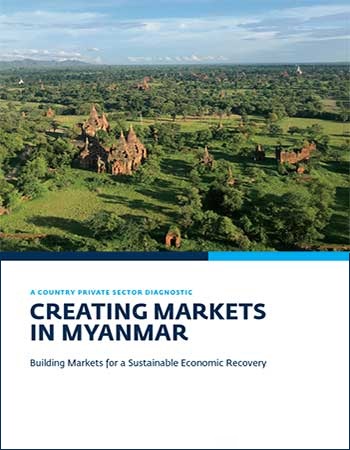
Building Markets for a Sustainable Economic Recovery
Myanmar has achieved tremendous economic growth and greatly improved social outcomes during Myanmar’s ongoing triple transition that began in 2011. Growth averaged 7 percent a year between 2011 and 2017 and poverty was reduced by half between 2005 and 2017. After a spectacular takeoff, Myanmar’s transition has been losing momentum as realization of its complexity and as recent conflicts have dented the optimism that characterized the early transition years. The Covid-19 global pandemic has increased the challenge. However, with the right policy choices, Myanmar could sustain a high growth rate and achieve upper-middle-income status in the next two decades supported by a thriving and responsible private sector.
The Myanmar authorities started to increase the pace of economic reforms in 2018-19, driven by the need to attract foreign investments and boost economic growth. However, the COVID-19 shock has increased economic vulnerabilities and put a further premium on good economic management. Therefore, it is now even more urgent for Myanmar to deepen economic reforms to support a sustainable recovery and accelerate the country’s economic transformation toward a higher middle-income economy. Unleashing the full potential of the private sector will be key to this transformation. To support this process, the Country Private Sector Diagnostic identifies and analyzes key binding constraints to private sector development and proposes short- to medium-term policy measures to tackle the structural constraints that limit private sector–led recovery and sustainable development.
